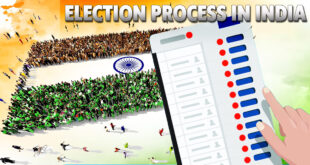The Ayodhya issue is tantalisingly poised and there are only guesses about how the case could pan out — the Supreme Court of India had allowed arguments before the court and mediation talks to proceed simultaneously. It has been an unusual step. The dichotomy of this approach could perhaps be explained by the fact that the Court had marked August 15 as the deadline for turning in the settlement. Then, in July the pace of mediation was stepped up and the court wanted a report by August 1. Since there was no settlement by then, it commenced hearing. Down the line some parties made requests for a resumption of talks. It looked as if the court was unwilling to stop the hearing but also reluctant to let go of the possibility of a compromise. Parties to appeals, settlement The appeals pending before the court — as many as 14 — arose out of five original suits filed in Allahabad. Out of the said five suits, four were filed between January 1950 and 1962. The first two were filed by individuals in their capacity as worshippers. The second suit was allowed to be withdrawn on September 18, 1990. The third suit was filed by the Nirmohi Akhara of the Ramanandi Sect through its Mahant in 1959. The fourth was filed in 1961 by the Uttar Pradesh Sunni Central Waqf Board and eight Muslim residents of Ayodhya and the general secretary (by name) of the Jamiat Ulema Hind, U.P. branch. In this suit many Hindu parties were arrayed as defendants. Representative status was given by the court to the plaintiffs and defendants in this suit to represent their two communities respectively. The fifth suit was filed in 1989 by Bhagwan Sri Rama Virajman (the deity is regarded by law as a perpetual minor requiring representation through human agency) and Asthan Sri Rama Janma Bhumi Ayodhya (the place of birth) through Sri Deoki Nandan Agrawal, who incidentally was a former High Court judge and resident of Allahabad and sought to be treated as the friend of the deity. Going by media reports, it appears that some of the significant parties in the case, but not all, are parties to the settlement. It is believed the Vishwa Hindu Parishad in the form of the Ram Janambhumi Nyas and its supporter T.N. Pandey as the current friend of deity on the extreme side, and the Jamiat Ulema Hind on the other extreme side are opposed to the settlement. If that be so, it means there is a broad spectrum in between, of the Sankaracharyas backed Punaruddhar Samiti, the Nirvani and Nirmohi Akhara bodies and the Hindu Mahasabha which are pro-settlement. And most important of all, the Uttar Pradesh Sunni Central Waqf Board, the statutory custodian of the disputed site under the Waqf Act, is reported to be a signatory. If these reports are anything to go by, the board is willing to acquiesce in the acquisition of the disputed site and give up its claim to it if other places of worship are protected and the Muslim community gets a fair number of additional mosques, in Ayodhya and elsewhere, where prayers can be held. So, what does a court do under these circumstances where a number of parties come forth with a settlement which they can subscribe to and which could cease the conflict, but which other parties oppose? The Code of Civil Procedure allows one or more of community of persons, with the permission of the court, to sue or be sued, or may defend such suit, on behalf of or for the benefit of all persons so interested. The court shall, in every case where permission or direction is given, at the plaintiff’s expense, give notice of the institution of the suit to all persons so interested, either by personal service, or, where, by reason of the number of persons or any other cause, such service is not reasonably practicable, by public advertisement, as the court in each case may direct. Independent of the power to represent the general body, any person on whose behalf, or for whose benefit a suit is instituted or defended may apply to the court to be made a party to such suit. The only restriction for a settlement so brought about to bind all persons is that no suit could be withdrawn, or compromise made, without the leave of court. The Sunni Waqf Board having been given representative character and which claimed ownership to the site and the mosque literally excludes any scope for any other person among the Muslim community to lay claim to the property contrary to the concessions and agreement which it is prepared to enter into. The Hindu parties that have not come on board will have to tell the court why they are resisting a settlement in which they are getting the land for which they have been fighting for so long and raised such large funds, when the site is being effectively given up by the Muslim parties, and where the Ram temple can now be a reality.
Check Also
The Transplantation of Human Organs and Tissues Act (THOTA)
Concept The Transplantation of Human Organs and Tissues Act (THOTA) was enacted in India in …
 Chinmaya IAS Academy – Current Affairs Chinmaya IAS Academy – Current Affairs
Chinmaya IAS Academy – Current Affairs Chinmaya IAS Academy – Current Affairs



